Nov 4, 2021 | Climate Change, Data and Methods, Risk and resilience
By Asjad Naqvi and Irene Monasterolo from the IIASA Advancing Systems Analysis Program
Asjad Naqvi and Irene Monasterolo discuss a framework they developed to assess how natural disasters cascade across socioeconomic systems.
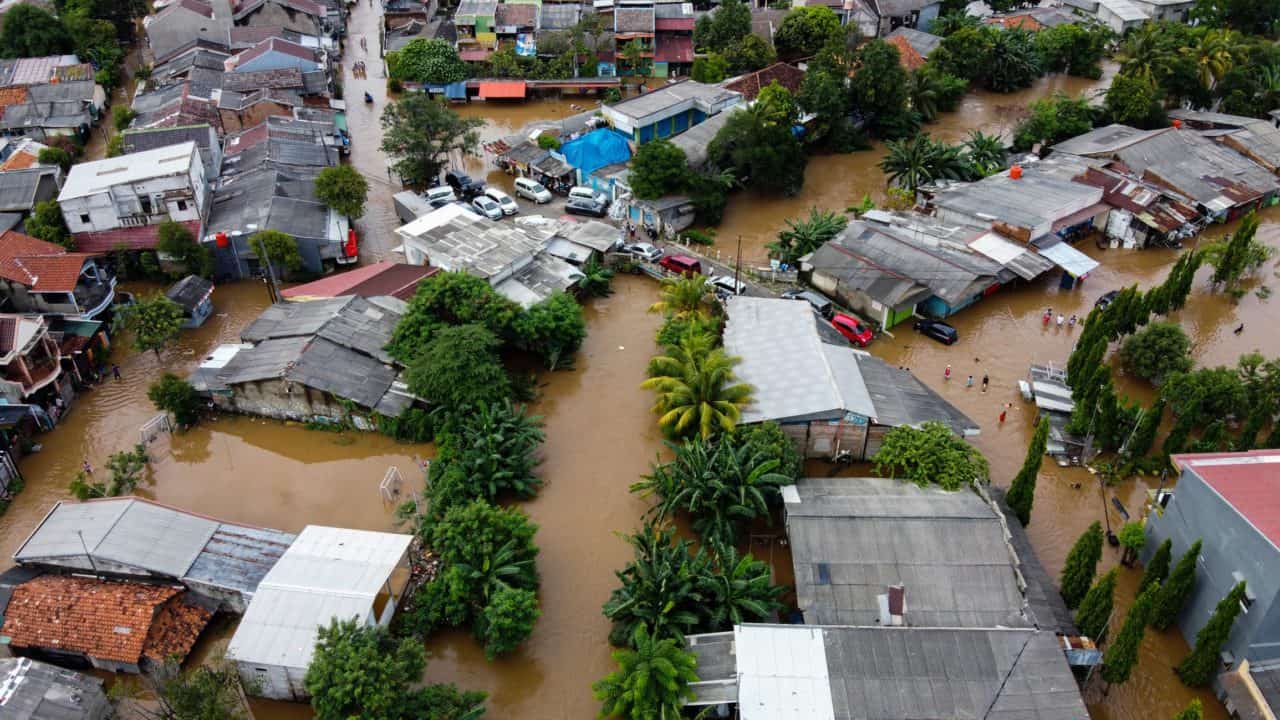
© Bang Oland | Dreamstime.com
The 2021 Nobel Prize for Physics, was awarded to the topic of “complex systems”, highlighting the need for a better understanding of non-linear interactions that take place within natural and socioeconomic systems. In our paper titled “Assessing the cascading impacts of natural disasters in a multi-layer behavioral network framework”, recently published in Nature Scientific Reports, we highlight one such application of complex systems.
In this paper, we develop a framework for assessing how natural disasters, for example, earthquakes and floods, cascade across socioeconomic systems. We propose that in order to understand post-shock outcomes, an economic structure can be broken down into multiple network layers. Multi-layer networks are a relatively new methodology, mostly stemming from applications in finance after the 2008 financial crisis, which starts with the premise that nodes, or locations in our case, interact with other nodes through various network layers. For example, in our study, we highlight the role of a supply-side production layer, where the flows are trade networks, and a demand-side household layer, which provides labor, and the flows are migration flows.
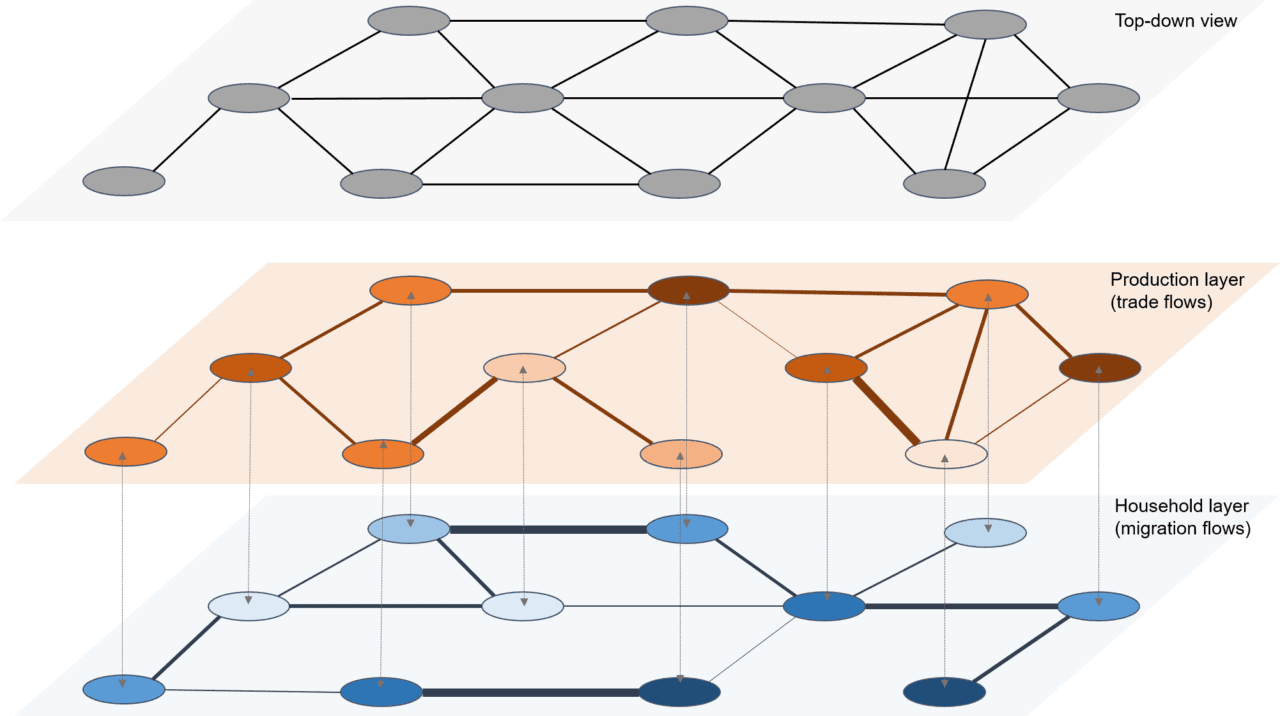
Figure 1: A multi-layer network structure
In this two-layer structure, the nodes interact, not only within, but across layers as well, forming a co-evolving demand and supply structure that feeds back across each other. The interactions are derived from economic literature, which also allow us to integrate behavioral responses to distress scenarios. This, for example, includes household coping mechanisms for consumption smoothing, and firms’ response to market signals by reshuffling supply chains. The price signals drive flows, which allows the whole system to stabilize.
We applied the framework to an agriculture-dependent economy, typically found in low-income disaster-prone regions. We simulated various flood-like shock scenarios that reduce food output in one part of the network. We then tracked how this shock spreads to the rest of the network over space and time.
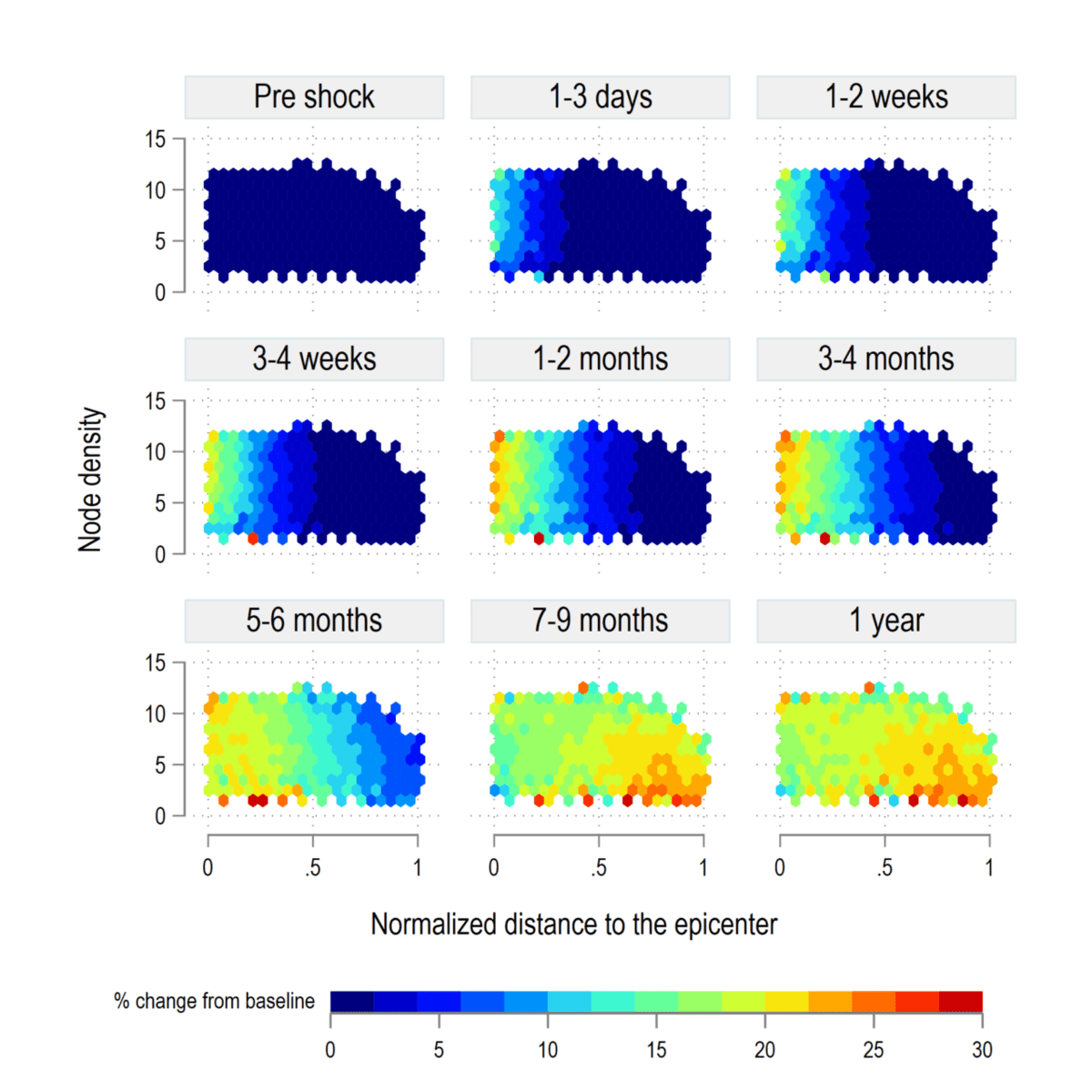
Figure 2: Evolution of vulnerability over time
Our results show that the transition phase is cyclical and depends on the network size, distance from the epi-center of the shock, and node density. Within this cyclical adjustment new vulnerabilities in terms of “food insecurity” can be created. Then, we introduce a new measure, the Vulnerability Rank, or VRank, to synthesize multi-layer risks into a single index.
Our framework can help inform and design policies, aimed at building resilience to disasters by accounting for direct and indirect cascading impacts. This is especially crucial for regions where the fiscal space is limited and timing of response is critical.
Reference:
Naqvi, A. & Monasterolo, I. (2021). Assessing the cascading impacts of natural disasters in a multi-layer behavioral network framework. Scientific Reports 11 e20146. [pure.iiasa.ac.at/17496]
Note: This article gives the views of the author, and not the position of the Nexus blog, nor of the International Institute for Applied Systems Analysis.
May 12, 2021 | Poverty & Equity, Risk and resilience, Sustainable Development
by Viktor Roezer | Swenja Surminski | Finn Laurien | Colin McQuistan | Reinhard Mechler | Anna Svensson
Disaster Risk Reduction investments bring a wide variety of benefits, including economic, ecological, and social, but in practice these multiple resilience dividends are often not included in investment appraisals or are not recognized by those making funding decisions. How do we change this?
Research led by the London School of Economics and Political Science with IIASA and Practical Action published in the Working Paper Multiple resilience dividends at the community level: A comparative study on disaster risk reduction interventions in different countries highlights the need for an integrated decision-making framework to overcome the challenges.
The negative effects of disasters on people and communities are varied and far reaching, and will only get worse as climate change make floods and other natural hazards more frequent, severe, and unpredictable. Disasters lead to loss of lives, assets, and livelihoods, they undermine or destroy development progress. Since 2000 climate related hazards have caused $2.2 trillion of losses and damages and have affected approximately 3.9 billion people globally.
With investments in disaster risk reduction (DRR), where community resilience is enhanced these negative impacts can be reduced and savings can be made. It’s more cost effective to invest in pre-event resilience than post-event response and recovery.
So why is disaster risk reduction so difficult to finance?
The problem with estimating the direct benefit of disaster risk reduction interventions is that you only see the benefits when an event which would otherwise have turned into a disaster occurs and is successfully mitigated.
This makes cost-benefit analysis and other decision-making methods difficult to carry out, and makes the costs of doing something more aligned to the probability of the event, rather than the lives and economic costs saved, thus changes to policy and practice are slow to materialize.
What are the multiple dividends of resilience?
The multiple dividends of resilience refer to positive socioeconomic outcomes generated by, and co-benefits of, an intervention beyond, and in addition to, risk reduction.
It’s an approach aimed at making DRR investments more attractive as the multiple dividends of an investment may help identify win-win-win situations (as well as trade-offs), even if no hazard event occurs. Co-benefits can be intended, or unintended.
As framed by the Triple Resilience Dividend concept these benefits can be divided into three categories:
1. The avoided losses and damages in case of a disaster
For example, how bio-dykes in Nepal prevent river bank erosion, which reduces the risk of flooding, and associated sand deposits that ruin the fertility of agricultural land.
2. The economic potential of a community that is unlocked through the intervention
This includes ecosystem-based adaptation solutions in Vietnam where mangrove plantations create new habitats for fish, leading to improved livelihood opportunities for those making their living from fishing.
3. Other development co-benefits
Transition to solar stoves in rural Afghanistan does not only protect natural capitals from degradation, but also empowers women and girls, reduces in-house smog pollution, and fosters technological innovations.

Rongali next to his community’s bio-dyke. Photo by Sanjib Chaudhary, Practical Action.
What are the challenges?
The triple resilience dividend approach is often linked to new and innovative solutions like ecosystem based adaptation, where the benefits can be wider, but when and how they will materialize is more uncertain than with traditional, hard infrastructure solutions.
Although many developing countries have policies that align DRR, climate change adaptation, and sustainable development, sadly, in practice, local decision makers assume that multiple resilience dividends will only accumulate over the long term. This often leads them to select traditional, hard infrastructure solutions that offer quick and more visible protection.
We need more success stories. Pilot interventions can be shared and shown to community members and decision makers to overcome their skepticism but this require better and more comprehensive evidence than we have today.
We also lack decision-making frameworks that can include and monitor multiple resilience dividends. Frameworks that support planners as they navigate the decision-making process, and help generate the evidence needed.

Community members in the Peruvian Andes working at a local tree nursery. Photo by Giorgio Madueño , Practical Action
How do we overcome these challenges?
The solution suggested in Multiple resilience dividends at the community level: A comparative study on disaster risk reduction interventions in different countries is an integrated decision-making framework that allows to systematically include, appraise, implement, and evaluate individual resilience dividends at each stage of the decision-making process.
Application and relevance matters.
As we suggest, instead of maximizing resilience dividends based on a specific, one dimensional, metric (e.g., monetary benefits) decision-making approaches need to identify those dividends that are most needed and demanded by the community and the solutions, novel or local in nature, best suited to generate these.
A structured approach in combination with participatory decision making allows for a tailored approach where community buy-in is achieved by prioritizing the resilience dividend(s) that matter most to them, while at the same time contributing to the evidence base for multiple resilience dividends.
This is urgently needed to highlight the fundamental challenges with the existing planning and decision-making system and therefore generate demand to deliver more effective solutions at scale.
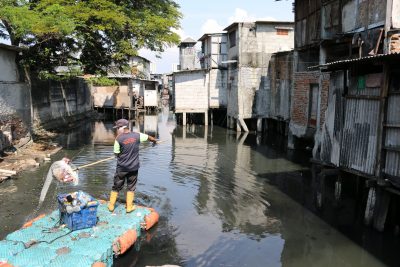
Cleaning waste from river in Penjaringan Urban Village, Jakarta, Indonesia. Photo by Piva Bell, Mercy Corps.
Read the working paper this blog is based on here.
This blog post first appeared on the Flood Resilience Portal. Read the original post here.
Note: This article gives the views of the author, and not the position of the Nexus blog, nor of the International Institute for Applied Systems Analysis.
May 5, 2021 | Climate Change, Poverty & Equity, Risk and resilience
By Julian Joseph, research assistant in the Water Security Research Group
Julian Joseph explains the concept of the triple dividend of disaster risk reduction investments based on the application of a novel economic model applied to a case study undertaken in Tanzania and Zambia.
What are the benefits of Disaster Risk Reduction (DRR) investments such as dams and the introduction of drought-resistant crops in agriculture for an economy? They are threefold and called the “triple dividend” of DRR investments. The first dividend comprises the direct effects of DRR investments, which limit damage to houses, infrastructure, and other physical assets and prevent death and injury. The second dividend unlocks the economic potential of an economy because risk reduction drives people and businesses to invest more, as they expect less of what they invest in to be destroyed by disasters, while the third dividend is comprised of development co-benefits through other uses the investments provide.
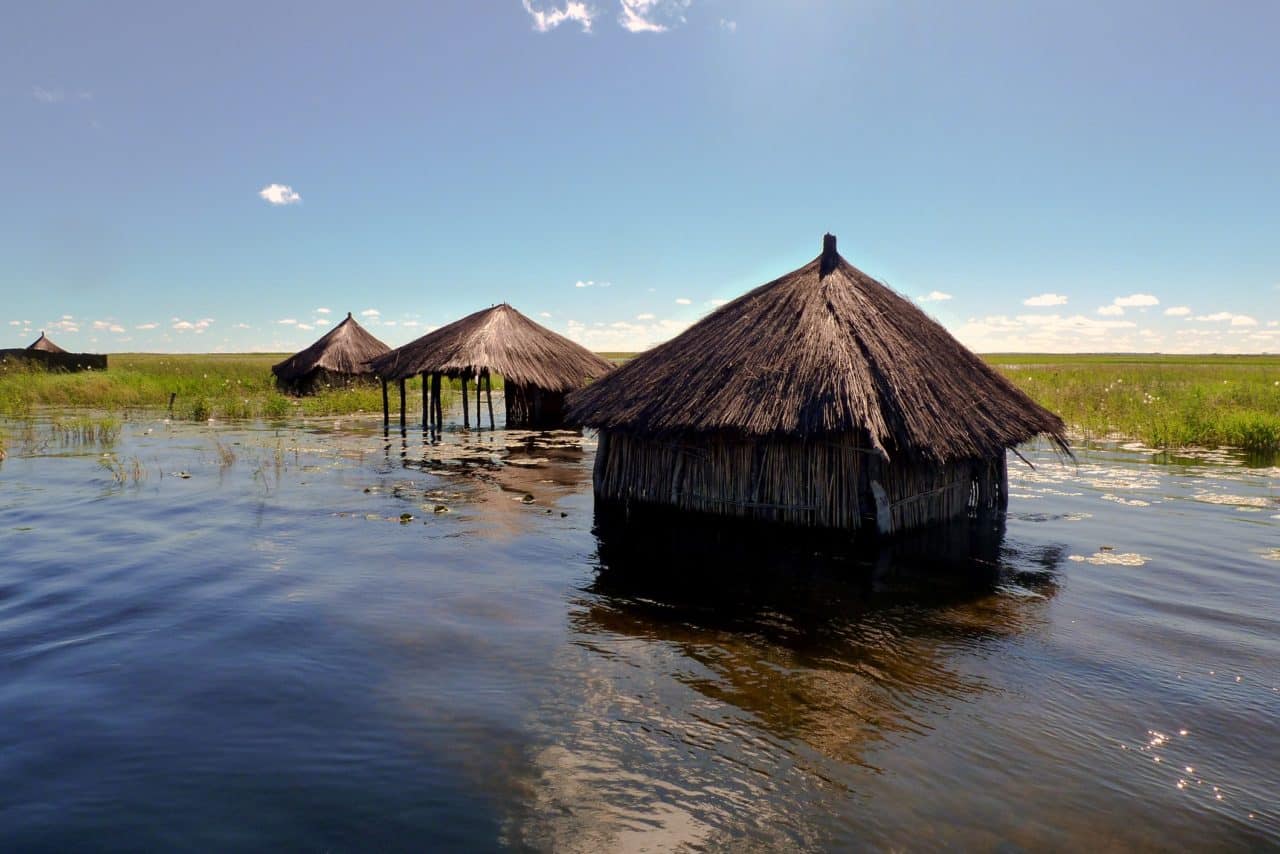
© Gerrit Rautenbach | Dreamstime.com
Using a new macroeconomic model called DYNAMMICs, my colleagues and I have found that there is often a significant growth effect for the economy attached to investing in mitigation measures like dams and drought resistant crops, which is commonly underestimated in traditional models. One reason for this is the focus of other models on only the first, direct dividend. We specifically looked into the examples of Tanzania and Zambia, which show that governments and other stakeholders in developing countries can spur economic growth by investing in DRR measures, thus increasing future earnings and creating a safe environment for investments into other economic activities.
In Tanzania and Zambia, floods affect tens of thousands of people each year (on average 45,000 or .08% of the population in Tanzania and 20,000 or .11% of the population in Zambia). Droughts have more widespread consequences and already affect 11.8% of the population in Tanzania and 19% of Zambians who often lose all or parts of their harvest. This poses an imminent threat to food security in countries where substantial shares of the population rely on subsistence farming as their primary source of income. Given the effects of climate change, these numbers and their ramifications are bound to become ever more pressing issues. However, policymakers, institutions, enterprises, and individuals tend to underinvest in adaption measures.
A promising avenue for demonstrating the potential of DRR investments is offered by including all economic growth effects they invoke into policy analysis, thus showing that besides risk reduction and post-disaster mitigation of destruction, investing in DRR measures can help countries achieve many of their other development goals as well.
We tend to only think of the first dividend of DRR investments, the direct effects of which stop people from being immediately affected by disasters. In the case of Tanzania and Zambia, we examined, among others, the benefits of constructing additional dams. The direct benefits of dams lie in the safeguarding of livelihoods, infrastructure, housing, and agricultural production. These are seen as the first dividend, called the ex-post damage mitigation effect. There are however also additional co-benefits.
In both Tanzania and Zambia, large shares of the population are heavily dependent on agriculture, which makes the introduction of drought-resistant crop varieties such an additional benefit. These crop varieties do not only help farmers preserve their yields in times of disastrous droughts, but additionally support farmers by generating higher yields, even in the absence of disaster. This effect is boosted by the lowered risk for the loss of crops, which spurs investment into farming activities and inputs. Farmers who do not fear losing their entire harvest can, and generally will, invest more into the production of this crop – an example of the second type of dividend, the ex-ante risk reduction effect. This type of economically beneficial effect materializes regardless of the onset of disaster.
The same is true for the third type of dividend, the co-benefit production expansion effect, which is especially relevant for the advantages of dams. The power generation capability of dams, leads to much larger economic gains than the two other dividends combined. In countries such as those at hand with frequent power cuts and comparably low levels of electrification, especially in rural areas, the additional electricity generated can lead to particularly pronounced positive effects by supplying economic actors with access to power. In other scenarios, the provision of ecosystem services is also an important effect falling into this category.
The results we obtained using the DYNAMMICs model are promising: Constructing only two additional dams leads to a 0.3% increase of GDP growth in Tanzania for the next 30 years (0.2% in Zambia) with results largely (97%) driven by the co-benefit production expansion effect. Similarly, the introduction of drought resistant crops and exposure management (i.e., land use restrictions) significantly boost economic growth perspectives. Finally, introducing insurance is a driver for a reduction in the variance of GDP growth, which helps to reduce uncertainty for everyone in the economy. Modeling in such a fashion is therefore an important means of weighing policy options for DRR against each other and for determining optimal levels of investment.
Note: This article gives the views of the author, and not the position of the Nexus blog, nor of the International Institute for Applied Systems Analysis.
Mar 29, 2019 | USA, Young Scientists
By Matt Cooper, PhD student at the Department of Geographical Sciences, University of Maryland, and 2018 winner of the IIASA Peccei Award
I never pictured myself working in Europe. I have always been an eager traveler, and I spent many years living, working and doing fieldwork in Africa and Asia before starting my PhD. I was interested in topics like international development, environmental conservation, public health, and smallholder agriculture. These interests led me to my MA research in Mali, working for an NGO in Nairobi, and to helping found a National Park in the Philippines. But Europe seemed like a remote possibility. That was at least until fall 2017, when I was looking for opportunities to get abroad and gain some research experience for the following summer. I was worried that I wouldn’t find many opportunities, because my PhD research was different from what I had previously done. Rather than interviewing farmers or measuring trees in the field myself, I was running global models using data from satellites and other projects. Since most funding for PhD students is for fieldwork, I wasn’t sure what kind of opportunities I would find. However, luckily, I heard about an interesting opportunity called the Young Scientists Summer Program (YSSP) at IIASA, and I decided to apply.
Participating in the YSSP turned out to be a great experience, both personally and professionally. Vienna is a wonderful city to live in, and I quickly made friends with my fellow YSSPers. Every weekend was filled with trips to the Alps or to nearby countries, and IIASA offers all sorts of activities during the week, from cultural festivals to triathlons. I also received very helpful advice and research instruction from my supervisors at IIASA, who brought a wealth of experience to my research topic. It felt very much as if I had found my kind of people among the international PhD students and academics at IIASA. Freed from the distractions of teaching, I was also able to focus 100% on my research and I conducted the largest-ever analysis of drought and child malnutrition.
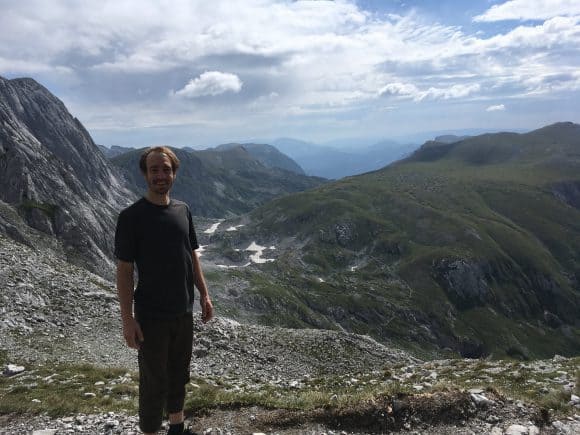
© Matt Cooper
Now, I am very grateful to have another summer at IIASA coming up, thanks to the Peccei Award. I will again focus on the impact climate shocks like drought have on child health. however, I will build on last year’s research by looking at future scenarios of climate change and economic development. Will greater prosperity offset the impacts of severe droughts and flooding on children in developing countries? Or does climate change pose a hazard that will offset the global health gains of the past few decades? These are the questions that I hope to answer during the coming summer, where my research will benefit from many of the future scenarios already developed at IIASA.
I can’t think of a better research institute to conduct this kind of systemic, global research than IIASA, and I can’t picture a more enjoyable place to live for a summer than Vienna.
Note: This article gives the views of the author, and not the position of the Nexus blog, nor of the International Institute for Applied Systems Analysis.
Jul 6, 2017 | Risk and resilience
An interdisciplinary research project explores glo-cal entanglements of power and nature in 18th century Vienna
By Verena Winiwarter, Guest Research Scholar, IIASA Risk and Resilience Program, and Professor, Centre for Environmental History, Alpen-Adria-Universitaet Klagenfurt.
Nowadays, rulers turn to primetime TV events to demonstrate their power, be it putting men on the moon, testing missiles, or building walls. When the kings of France, in particular Louis XIV and XV, built Versailles, they had the same goals: To claim their leading role in Europe and make their mastery of nature and their subjects visible for all.
In the 1700s, the Austro-Hungarian Empire had to pull off a comparable feat, in particular as Emperor Charles VI had a huge constitutional problem: His only surviving child, a smart and pretty daughter, was not entitled to the throne. Only men could be emperors of the Holy Roman Empire. So while eventually, an international agreement allowed young Maria Theresia to succeed him, her position was clearly weak and would become contested right after her father’s death.
The construction of Vienna’ Schönbrunn Palace, and the taming of the river that flows by it, served as an international declaration of power by the Habsburgs and helped secure Maria Theresia’s position. Vienna, the Habsburg capital, already sported a summer palace in the game-rich riparian area to the west of the city center, close to a torrential, but rather small tributary of the Danube, the Wien River. Here, the leaders decided, a palace dwarfing Versailles should be built. One of the most famous architects of his time, J.B. Fischer von Erlach originally designed a grandiose structure that could never have been carried out. But it staked a claim and when seven years later, a more realistic plan was submitted, it became the actual blueprint of what today is one of Vienna’s most famous tourist sites.

Fischer v. Erlach’s second, more feasible design for Schönbrunn Palace (Public Domain | Wikimedia Commons)
While the kings of France built in a swamp and overcame a dearth of water by irrigation, the Habsburgs’ choice offered another opportunity to show just how absolute their rule was: the torrential Wien River had damaged the walls of the hunting preserve with its then much smaller palace several times. Putting the palace right there, into a dangerous spot, allowed the house of Habsburg to prove that their engineers were in control.
The flamboyant new palace was deliberately placed close to the Wien River, necessitating its local regulation. This had repercussions for those living up- and downstream, as flood regimes changed. Not all such change was beneficial, as constraining the river’s power meant that it found outlets elsewhere. In this case, European power struggles affected the course of a river, putting a strain on locals for the sake of global status.
In the 19th century, effects of global events and structures played out in favor of local health, when it came to building sewers along the by then heavily polluted Wien River. The 1815 eruption of the Tambora volcano in Indonesia led to unusually heavy rains during the otherwise dry season and the proliferation of cholera, which British colonial soldiers brought to Europe. A cholera epidemic hit Vienna in 1831/32, creating momentum to finally build a main sewer along Wien River. The first proposals for a sewer date back to 1792; they were renewed in 1822, but due to urban inertia, the sewer was not built. Thousands of deaths (18,000 in recurring outbreaks between 1831-1873) called for a response, and from 1831 onwards, collection canals were built.
A global constellation had first affected locals negatively, but with long-term positive outcomes of much cleaner water.
We uncovered these stories of the glo-cal repercussions of Wien River management during the FWF-funded project URBWATER (P 25796-G18) at Alpen-Adria-Universität Klagenfurt with the joint effort of an interdisciplinary team. We have shown in several publications how urban development was intimately tied to the bigger and smaller surface waters and to groundwater availability, telling a co-evolutionary environmental history.
https://www.youtube.com/watch?v=dhvptRsuJcI
The overall development of the dammed and straightened, then covered river can be seen in science-based videos by team member Severin Hohensinner for 1755. At 2:00 in the video, the virtual flight nears Schönbrunn on the right bank, with the regulation measures visible as red lines. A comparison between 1755 and 2010 is also available. Both videos start with an aerial view of downtown Vienna and then turn to the headwaters of the Wien, progressing towards the center with the flow.
More on the project, including links to publications and images are available at http://www.umweltgeschichte.uni-klu.ac.at/index,6536,URBWATER.html
This article gives the views of the author, and not the position of the Nexus blog, nor of the International Institute for Applied Systems Analysis.




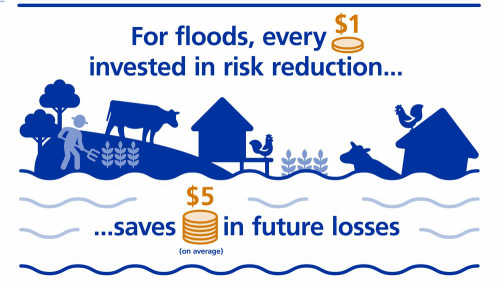






You must be logged in to post a comment.